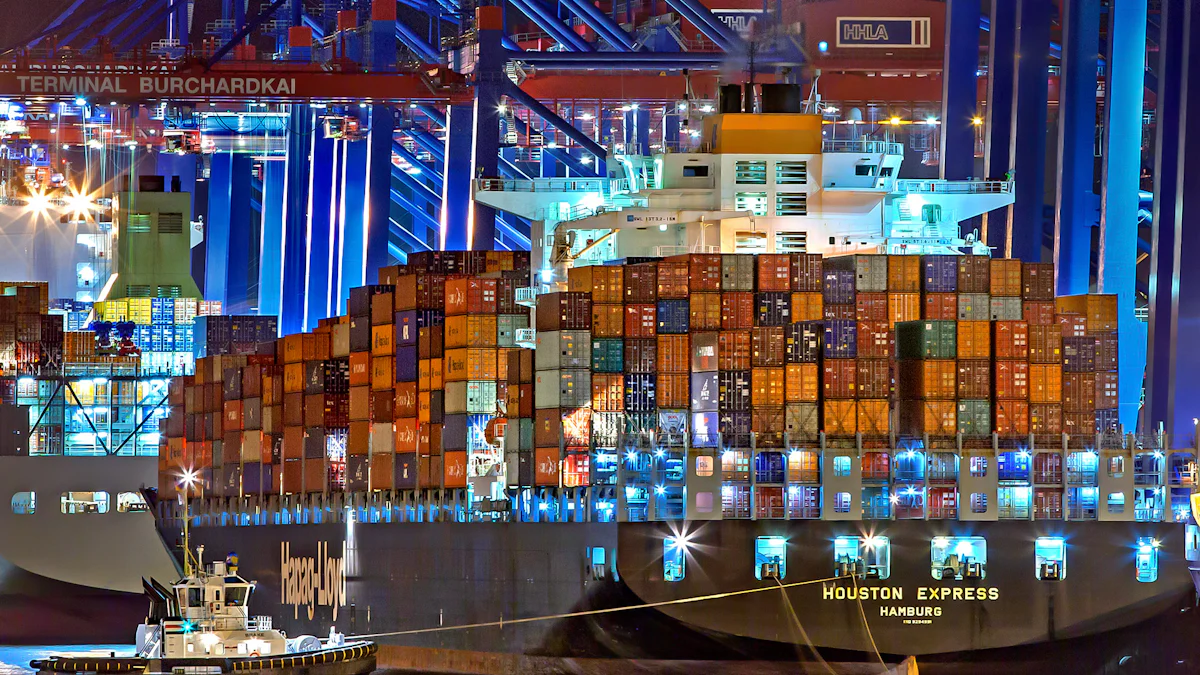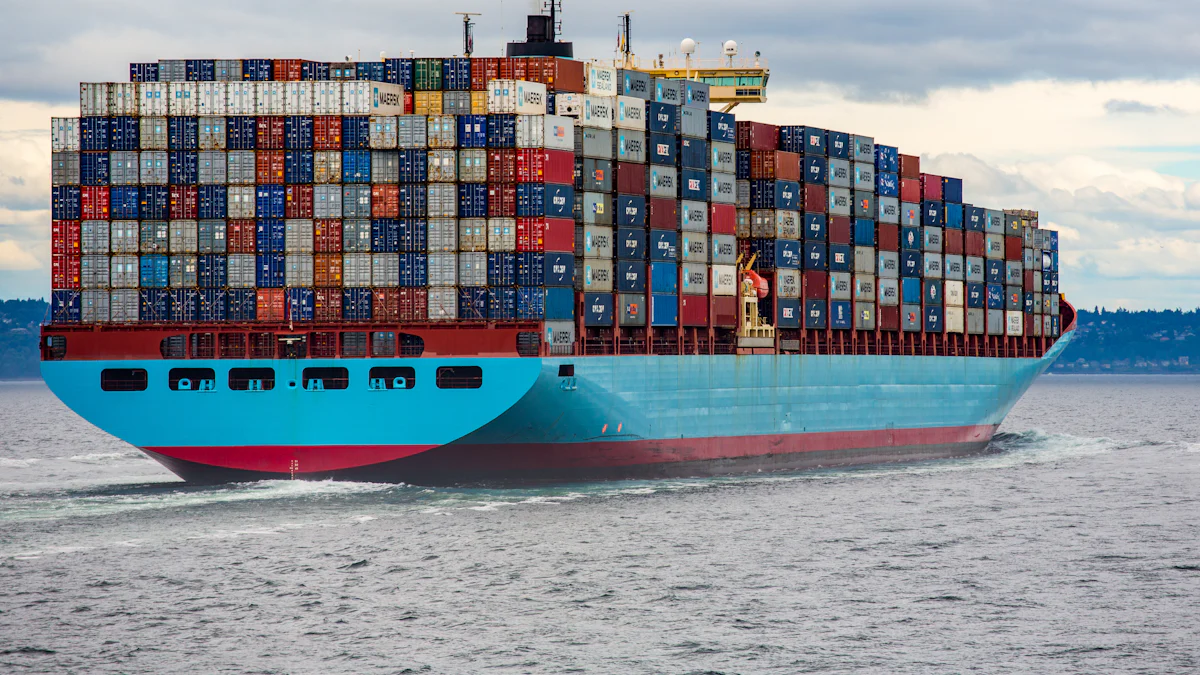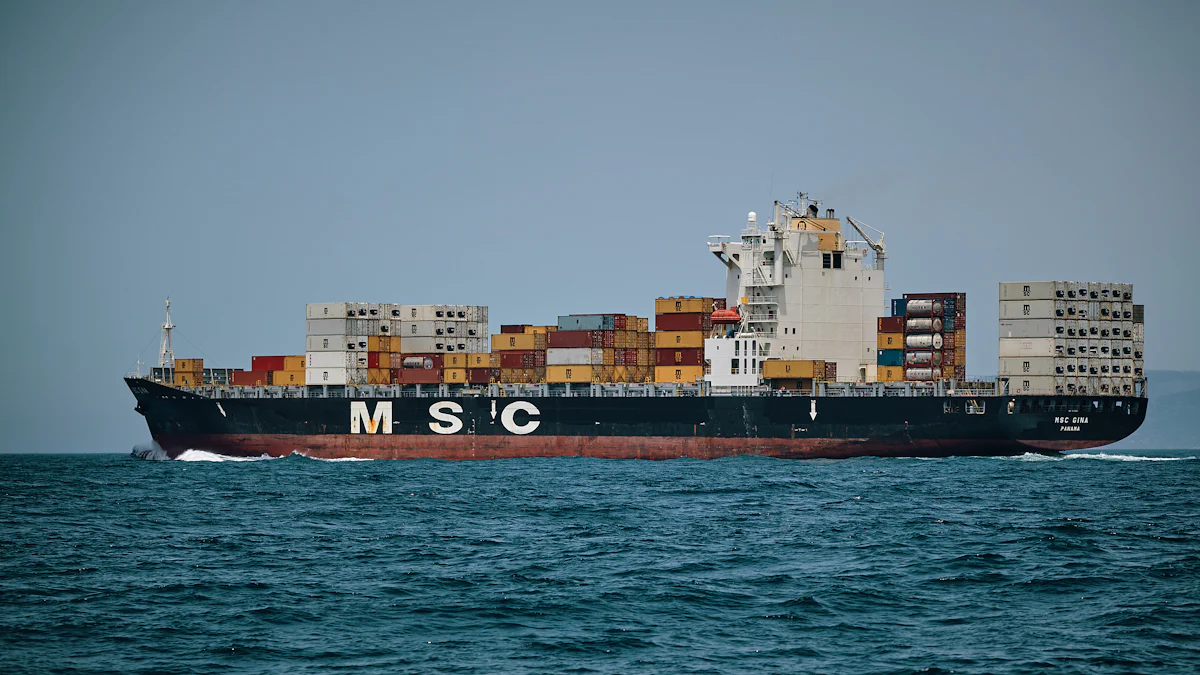Ocean Freight Market Forecast: Trends Shaping the Industry

Ocean freight plays a crucial role in global trade, facilitating the movement of goods across continents. The industry constantly evolves due to technological advancements and regulatory changes. Accurate forecasting becomes essential for businesses to navigate these shifts effectively. The Ocean Freight Market Forecast aims to provide insights into current trends and future projections. Understanding these dynamics helps stakeholders make informed decisions and stay competitive.
Ocean Freight Market Forecast: Current State of the Market
Market Overview
Key Statistics and Figures
The global ocean freight market has shown consistent growth. The market is expected to expand at a compound annual growth rate (CAGR) of 3.09% over the projected period. The market size was valued at approximately USD 74.9 billion in 2023. This growth indicates a steady demand for ocean freight services worldwide.
Major Players in the Industry
Several key players dominate the ocean freight industry. Companies like Maersk, MSC, and CMA CGM lead the market. These companies have extensive networks and advanced logistics capabilities. Their influence shapes the industry's direction and competitive landscape.
Recent Developments
Technological Advancements
Technological advancements continue to transform the ocean freight market. The integration of AI and big data enhances supply chain management. AI processes vast amounts of data in real-time. This capability allows for more accurate predictions of production and sales trends. Blockchain technology also improves transparency and security in transactions.
Regulatory Changes
Regulatory changes impact the ocean freight industry significantly. Governments worldwide emphasize the importance of localizing key supply chain elements. This focus aims to enhance resilience and reduce carbon emissions. New regulations often prioritize supply chain security over efficiency. These changes require companies to adapt their operations accordingly.
Challenges Facing the Industry
Supply Chain Disruptions
Supply chain disruptions pose significant challenges to the ocean freight market. Events such as geopolitical tensions and natural disasters can disrupt trade routes. These disruptions lead to delays and increased costs. Companies must develop strategies to mitigate these risks and ensure smooth operations.
Environmental Concerns
Environmental concerns are increasingly influencing the ocean freight industry. The push for sustainability drives the adoption of green shipping practices. Companies set emission reduction targets to minimize their environmental impact. These initiatives require substantial investment and innovation.
Ocean Freight Market Forecast: Key Trends Shaping the Future

Technological Innovations
Automation and AI
Automation and AI continue to revolutionize the ocean freight industry. Automated systems enhance operational efficiency by reducing human error. AI algorithms optimize route planning and cargo loading. This technology improves fuel efficiency and reduces transit times. Companies leverage AI to predict maintenance needs, minimizing downtime.
Blockchain Technology
Blockchain technology offers significant benefits for the ocean freight market. Blockchain enhances shipment tracking and transparency. Smart contracts automate payment approvals, reducing administrative costs. Blockchain also mitigates shipping delays and fraud risks. The digitization of bills of lading through blockchain speeds up approval processes.
Sustainability Initiatives
Green Shipping Practices
Green shipping practices gain importance in the ocean freight market. Companies adopt measures to reduce carbon emissions. The use of cleaner fuels and energy-efficient vessels becomes more prevalent. Green shipping practices include optimizing routes to minimize fuel consumption. These initiatives align with global sustainability goals.
Emission Reduction Targets
Emission reduction targets drive innovation in the industry. Companies set ambitious goals to lower greenhouse gas emissions. Regulatory bodies enforce stricter emission standards. Investment in cleaner technologies and alternative fuels increases. Meeting these targets requires collaboration across the supply chain.
Market Dynamics
Shifts in Global Trade Routes
Shifts in global trade routes impact the ocean freight market. Emerging markets like China-ASEAN gain prominence. Companies expand into these regions to meet growing demand. Traditional routes such as China-Europe remain vital. The optimization of trade routes enhances service reliability.
Impact of Geopolitical Events
Geopolitical events significantly influence the ocean freight market. Trade tensions and political instability disrupt supply chains. Companies must navigate these challenges to maintain operations. Strategic planning and risk management become essential. The ability to adapt to geopolitical shifts ensures business continuity.
Ocean Freight Market Forecast: Future Projections and Forecasts

Short-term Outlook
Expected Market Growth
The ocean freight market is projected to experience significant growth in the short term. The market, valued at approximately USD 74.9 billion in 2023, is expected to expand at a compound annual growth rate (CAGR) of 3.09%. This growth trajectory indicates robust demand for ocean freight services. Increased capacity from carriers and heightened market demand will drive this expansion. Companies will likely invest in advanced technologies to enhance operational efficiency and service quality.
Anticipated Challenges
Despite positive growth projections, the ocean freight market will face several challenges. Capacity constraints may lead to higher freight rates, impacting cost management for businesses. Geopolitical tensions and trade policy changes could disrupt supply chains. Environmental regulations will require companies to adopt greener practices, necessitating substantial investment. Addressing these challenges will be crucial for maintaining market stability and ensuring sustainable growth.
Long-term Projections
Emerging Markets
Emerging markets will play a pivotal role in the long-term growth of the ocean freight industry. Regions such as China-ASEAN and China-Russia will see increased trade activity. Companies will expand their presence in these markets to capitalize on growing demand. Strengthening trade routes and optimizing logistics services will be essential. Investment in infrastructure and technology will support this expansion, enhancing service reliability and efficiency.
Future Technological Trends
Technological advancements will continue to shape the future of the ocean freight market. Automation and AI will further streamline operations, reducing human error and improving efficiency. Blockchain technology will enhance transparency and security in transactions. The development of intelligent prediction models will optimize route planning and cargo management. These innovations will drive the industry's evolution, ensuring competitiveness and resilience.
The ocean freight market faces transformative trends and future projections. Key trends include technological innovations, sustainability initiatives, and shifts in global trade routes. Staying informed and adaptable remains crucial for industry success. Companies must leverage insights for strategic planning. Utilizing resources like the Northeast Ocean Data Portal can enhance decision-making. Samsung's success story highlights the importance of results-driven strategies. Industry stakeholders should prioritize investment in technology and infrastructure. Embracing these changes will ensure competitiveness and resilience in the evolving market landscape.
See Also
Unveiling Sea Freight Logistics: What's Next in 2024?
Unraveling the Impact: Trends in Logistics Risk
Exploring the Future of LTL Freight: An In-Depth Analysis
Enhancing Supply Chain Efficiency: 5 Key Trends
The Transformation of Industries: Impact of Cloud Supply Chain Solutions
